Reflections of a Misak journalist two and a half years after the femicide of the Indigenous leader Nazaria Calambas.
By Angélica Almazán, Tracy L. Barnett and Diana Mery Jembuel Morales.
It’s been two and a half years since Nazaria Calambas, an Indigenous Misak leader in Colombia, was shot to death before the helpless gaze of her sister, in the La Cuchilla village of the Morales municipality of Cauca, Colombia. The circumstances surrounding Nazaria’s murder are all too typical for Indigenous women throughout the Americas, from Canada to Patagonia: official indifference, slow and ineffective law enforcement response, neglect and revictimization of the survivors, and denial of the systemic and intractable violence against women, so frequent and endemic that it has come to be known by a terrible name of its own: Femicide.
As the Canadian Association of Latin American and Caribbean Studies concluded after a 2017 international forum on violence against Indigenous women in the Americas, “There is an epidemic of violence against indigenous women in the Americas.” Seven years later, that epidemic shows no signs of abating.
Indigenous women are organizing, however, from the growing Missing and Murdered Indigenous Women (MMIW) movements in the north to the furious campaign against chineo, the the racist colonial practice of raping Indigenous girls by non-Indigenous men, especially in Argentina.
As we were preparing to release Part 1 of our Cosmology & Pandemic series, The Body as Territory, another high-profile femicide occurred in Colombia, this time to an acquaintance of one of our producers, Misak journalist and communications professional Diana Jembuel Morales. Diana had communication over the phone with Nazaria’s family just a few weeks after her murder, and has been in touch ever since. Though the details of the case are discouraging, the response of the Misak women is not. Far from being intimidated by this and other violent events that have occurred in the country against indigenous women, Jembuel reports, their participation in political and social life is increasing.
Tracy Barnett and Angélica Almazán of The Esperanza Project had a conversation with Diana, who knew Nazaria personally and has followed the case for these two and a half years. Here we share an edited transcript.
Para leer esta historia en Español, ver “La Identidad nunca se puede callar”
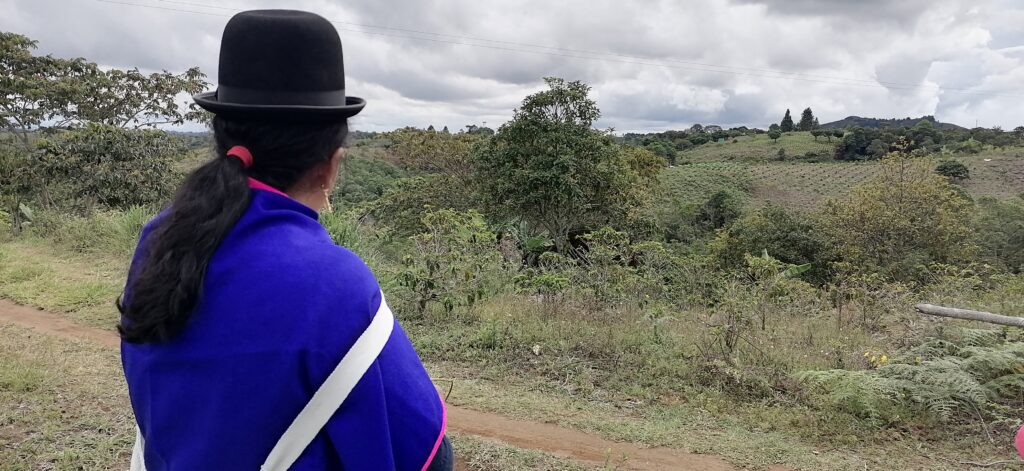
Diana, thank you for being with us here today. Two and a half years have passed since the assassination of the Misak leader, Nazaria Calambas. Tell us a little bit about Nazaria Calambas and her work.
Diana: I was fortunate to know Nazaria when she was a very young woman, when she was here in her home territory. We carried out a very important process of training and leadership of young people. At that time I didn’t know her that closely, but I saw that she was an active girl. She spoke the language very well; she was very good at speaking Spanish and the language we speak, Namtrik. Later, time passed and each of us went out to different territories. It had been about 15 or 16 years since I had heard anything about her, when on October 23 (2021) we received the news that she had been killed. When I was in Bogotá I received the news and it was very sad.
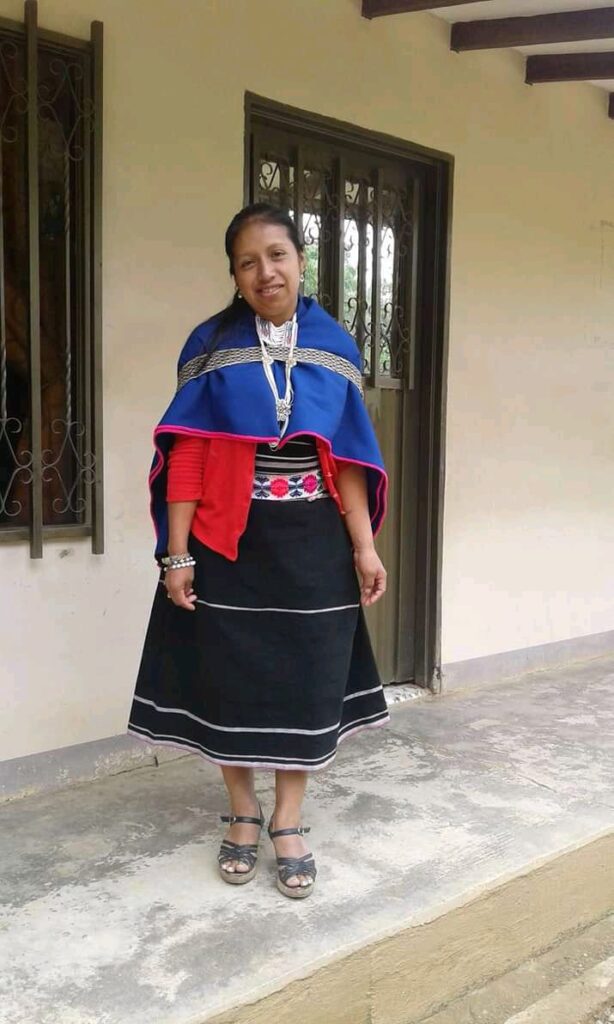
Misak women have always maintained our identity, and when we say identity it is a part that makes us unique in language, in dress, in community work, in caring for and protecting the territory. And they say that we came from water, words and dreams. Just as the indigenous peoples in Colombia have their origins, their worldviews and their life plans.
At that time, violence against Indigenous women in Colombia was a very threatening presence. Not only was that so in Misak territory, but there were other female leaders murdered and raped. It was very strong at that time. So, let’s say, the war affected us Misak women here in Colombia.
(Nazaria’s) territory of origin is here in Guambía, but due to a lack of available land, she went to an area with a warm climate, which is in the municipality of Morales, about two hours by car from here in her territory of origin, and which is a conflicted area. She had lived part of her adolescence there. Later she went out to work in the nearest city, which was Cali, to look out for herself, because she had two children and the Misak women are always tough and hardworking. Then she would leave her children with her mother and she would go to work and on the weekend she would be back with the children.
She was a single mother, but that did not mean abandoning her dreams. Rather, it was Nazaria’s way of fighting, being in Cali, coming and going.
She became a leader of her community in 2013, the people elected her for a year so that she led the political organizational process as a woman. She served as mayor without remuneration for a year, since for the Misak, as in many other indigenous communities, it is a right and legacy to serve one’s own people, in the Misak council of Pisitawu.
She learned from her leadership to speak, to say things as they are, from the truth. In her academic preparation, she managed to finish high school, which at that time was a challenge, and thanks to her effort and dedication she achieved it.

(Family archives)
Where and with whom did Nazaria live?
Diana: In the family life of the Calambas, there were two sisters and a brother. Her father and her mother are older adults. Máma* Nazaria leaves two children, one 17 and the other 12; she never married. On Oct. 7 she turned 34. She worked outside the territory and visited her family every two weeks. In those days when her death was close to her, in those two weeks she went home twice, to help harvest the coffee. Her family’s land is the only farm where they grow coffee. The rest is all dedicated to growing coca. Nazaria’s family had been living there for about nine years, and the leader of the cartel arrived two years before and began to cause conflicts over the issue of water.
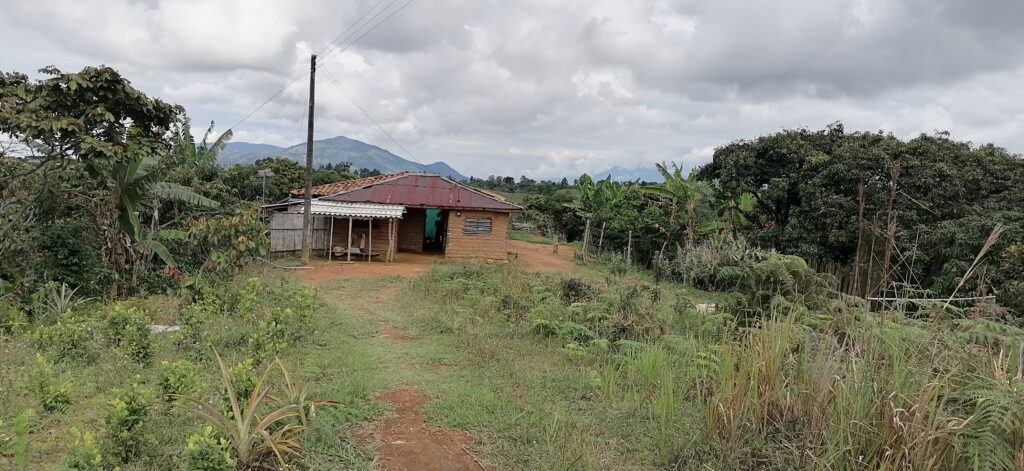
Based on the conversations that Diana had with Nazaria’s sister shortly after her death, she told Esperanza Project the circumstances of the homicide:
On the day of her murder, at noon, two neighbors went to look for Nazaria accompanied by three strangers, who said they were members of the criminal group that dominates the area, and said that they had come to help resolve a dispute between the neighbors.
There was a conflict over water between Nazaria’s family and those on the neighboring property, because the neighbor had laid a pipe to extract water from a spring that is on the Calambas family’s property and left them without enough water for their needs, as Nazaria’s sister explained.
The visitors said that the hose that brought water to Mama Nazaria’s property had been cut into pieces and accused the Calambas family of cutting the hose. However, according to the sister, they had not cut the hose; rather, it was the same neighbor who wanted to cause a conflict between them, and wanted to charge money for the destroyed hose.
Nazaria denied having cut the hose and was categorically opposed to paying for something she had not done. She confronted the men bluntly.
After several arguments, the men left for a while and later, around 4 in the afternoon, they returned to look for her at her house to tell her that “the boss” wanted to talk to her, they escorted her up the hill and shot her three times in the head with a gun.
At that moment the horror began for the Calambas family, who to this day, two and a half years later, continue to receive threats and intimidation. Although the complaint was made, it was not until mid-2023 that one of the hired killers was arrested.
Diana: Here in Guambia, the internal legal due process of listening to the family was carried out because they did not know who to vent to about all those threats and the follow-up that is being carried out in the Popayán Prosecutor’s Office. Popayán is the department that is part of it, the closest to the capital of Guambia.
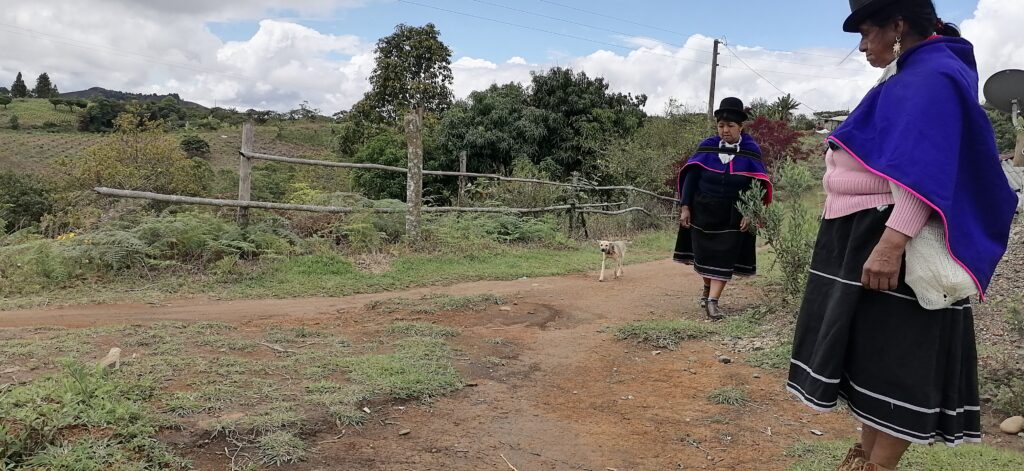
The Esperanza Project also spoke with Dr. Guillermo Yalanda, lawyer for the Misak people and legal advisor to the Guambia council.
What is the status of the investigation two and a half years after Nazaria’s murder?
Dr Guillermo Yalanda: The trial has not started, it is in the investigative process. The investigation is being carried out by the Attorney General’s Office. There is a specialized prosecutor’s office unit for these types of events and that prosecutor’s office is based in the city of Popayán, the capital of the department of Cauca. Currently, investigators from the Attorney General’s Office called the Technical Investigation Corps, better known as the CTI, are developing the natural process. There is a person detained who has knowledge of the entire context that happened in this homicide in Nazaria.
So it is certain that there is more than one person involved in this crime?
Dr Guillermo Yalanda: Sure, of course. There is a group of people who have common interests to carry out criminal acts in the area.

And Nazaria’s family? How are they right now? What is their situation at the moment?
Dr Guillermo Yalanda: Well, the reality is very hard, very hard, because she left two children who are in the hands of Nazaria’s family, in the hands of an aunt and grandmother. So they are in the classic definition that these children are orphans.
And they are still living on this same plot, in this conflict zone?
Dr Guillermo Yalanda: Yes, her sister and her mother live there. And conflict is alive. The conflict is permanent with the people who have an impact and who gave rise to Nazaria’s murder.
So it’s a pretty dangerous situation for them, right?
Dr Guillermo Yalanda: Yes, of course, of course. But you know that for the Misak people, their territory, their land, is fundamental to their life. It’s his mother. It’s their nature. That’s all. So. It is a territory where they are, that they have obtained and there they carry out their agricultural activities. So they don’t leave it, they defend it because there are people who want to evict them. And that’s why Nazaria fought and that’s why she died.
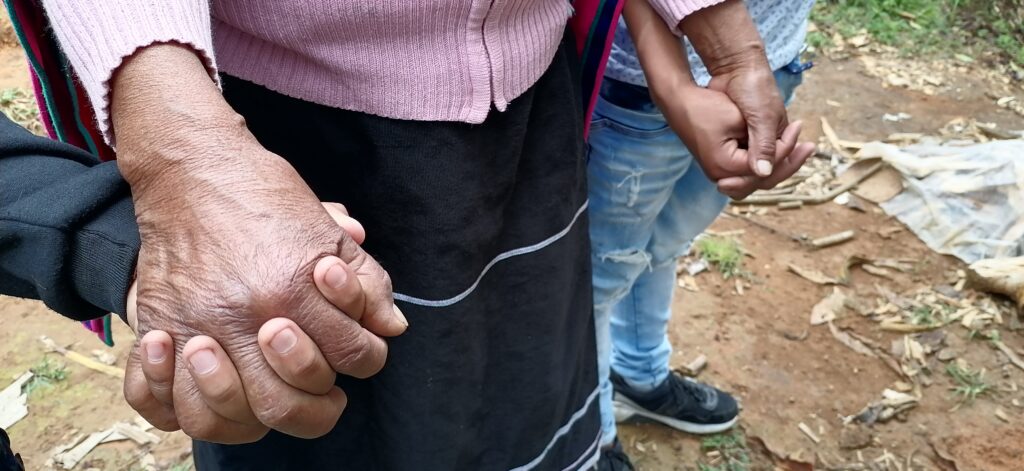
Diana states that the need to look for more job opportunities was what led Diana and her family to leave their territory of origin and acquire land in a warmer area to grow coffee and cassava, without imagining that it was a red zone, where the cartels had numerous coca-growing lands.
Diana: What the Misaks are interested in is working and taking care of the land and the desire to get out. But they buy the land and don’t know the historical context. Imagine the case of Nazaria. In other words, it was so urgent to leave, she bought the land, but she never saw that violence did not move from drug trafficking in her space and she never thought that it would affect her family and her life personally.
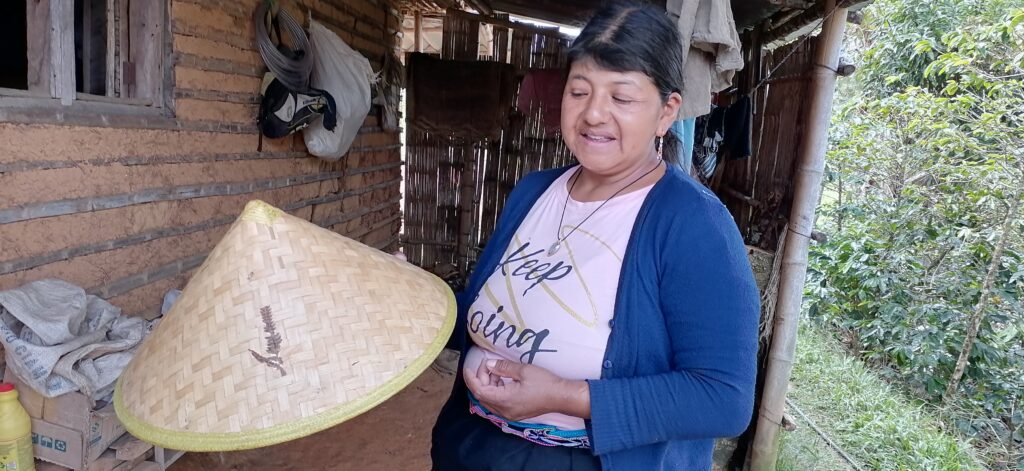
So I believe that what is required is special protection for the Misak people who go out to other contexts, but also for the indigenous peoples who are in those contexts of violence. That the State really realizes this reality, that it makes a real presence with the institutions in the most affected territories. May there be the ability to listen and the ability to protect against the violence that still persists in Colombia and here in Cauca.
I believe that after this strong disharmonization we have felt that some organizations’ eyes are on, where they really want women to participate, take care of themselves, lead, but that women continue to care for and protect their territory. Yes, we feel that there are international bodies because the national ones take a long time, but there is that need, that they must be taken care of so that they continue to maintain their identities.
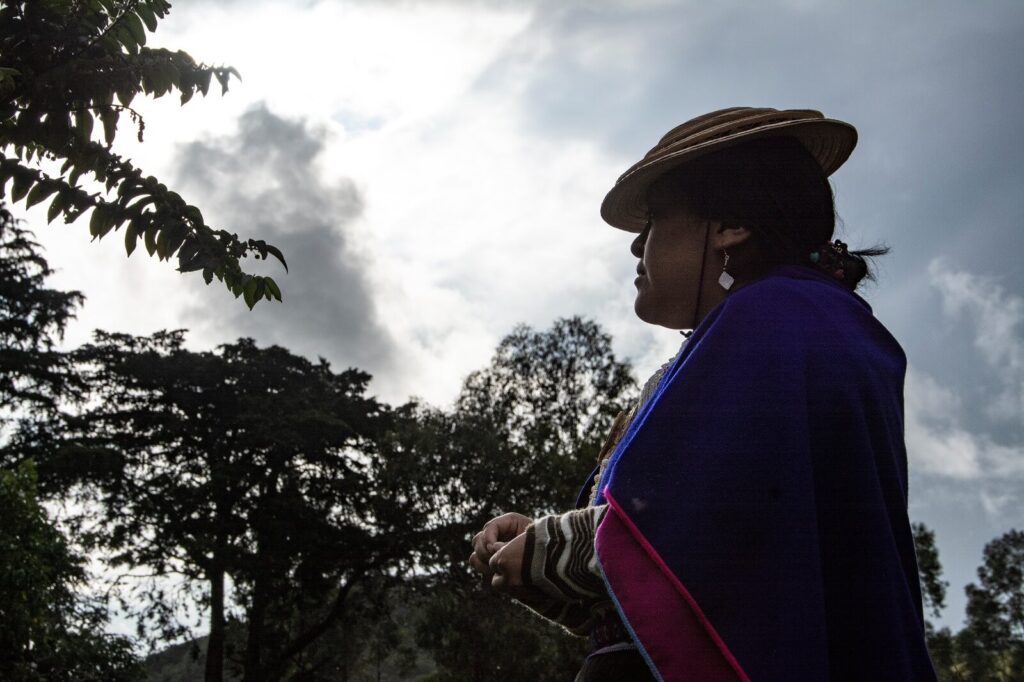
Diana mentions that in recent decades the participation of Misak women in social life has increased. Nazaria is one of those who dared to challenge conventions having a more active role in politics and organization. She hopes that the horror of this murder can at least cause international organizations to pay greater attention to the need to protect indigenous women in Colombia.
Diana: The Misak people have been pioneers in the creation of the indigenous movement in Colombia. But despite that, women have always been quiet and silenced and I believe it is time to continue speaking, to continue articulating, to continue relating, but also to continue training ourselves in the different spaces and contexts that we find ourselves.
Although war wants to silence us, I believe that the part of identity can never be silenced, but that one can leave traces so that the new generations also follow these leaderships, sometimes with challenges, but demonstrating that we continue to care for and protect the territory.
*Editor’s note: “Máma” is an honorary title given by the Misak People to acknowledge the leadership of the women, just as “Táta” is used for men.
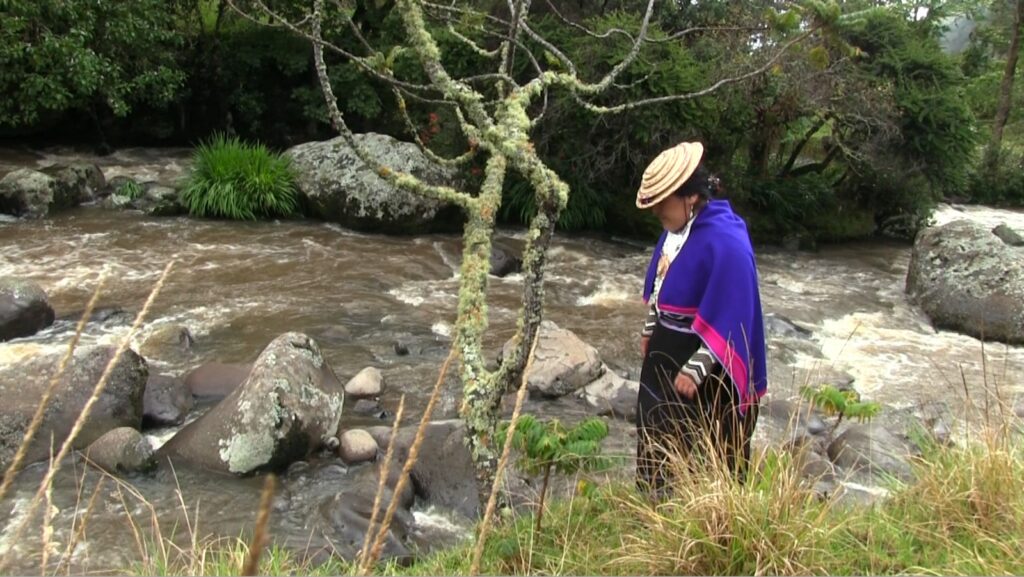
Femicide Misak Nazaria Calambas Tunubala violence against indigenous women